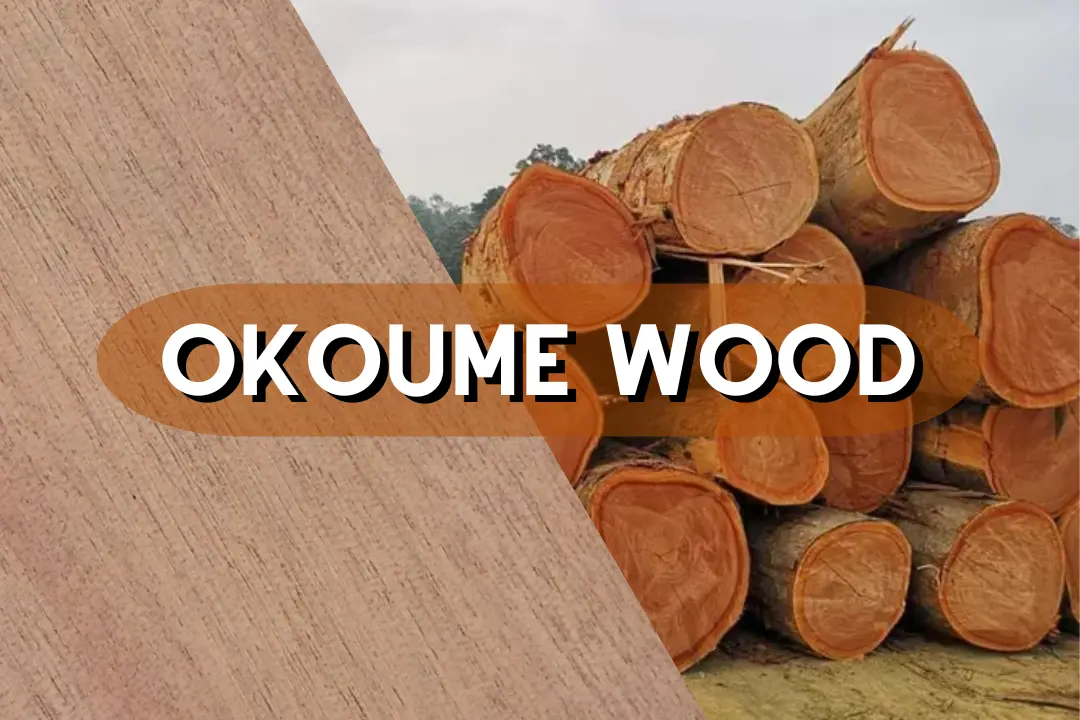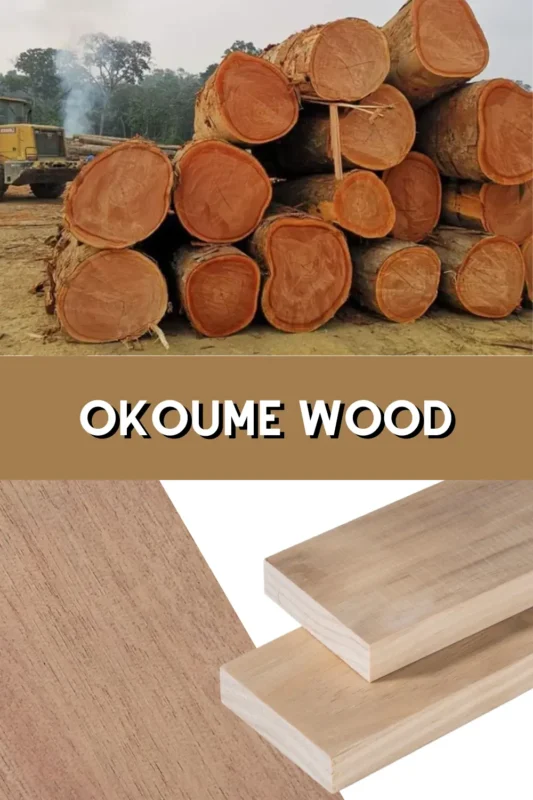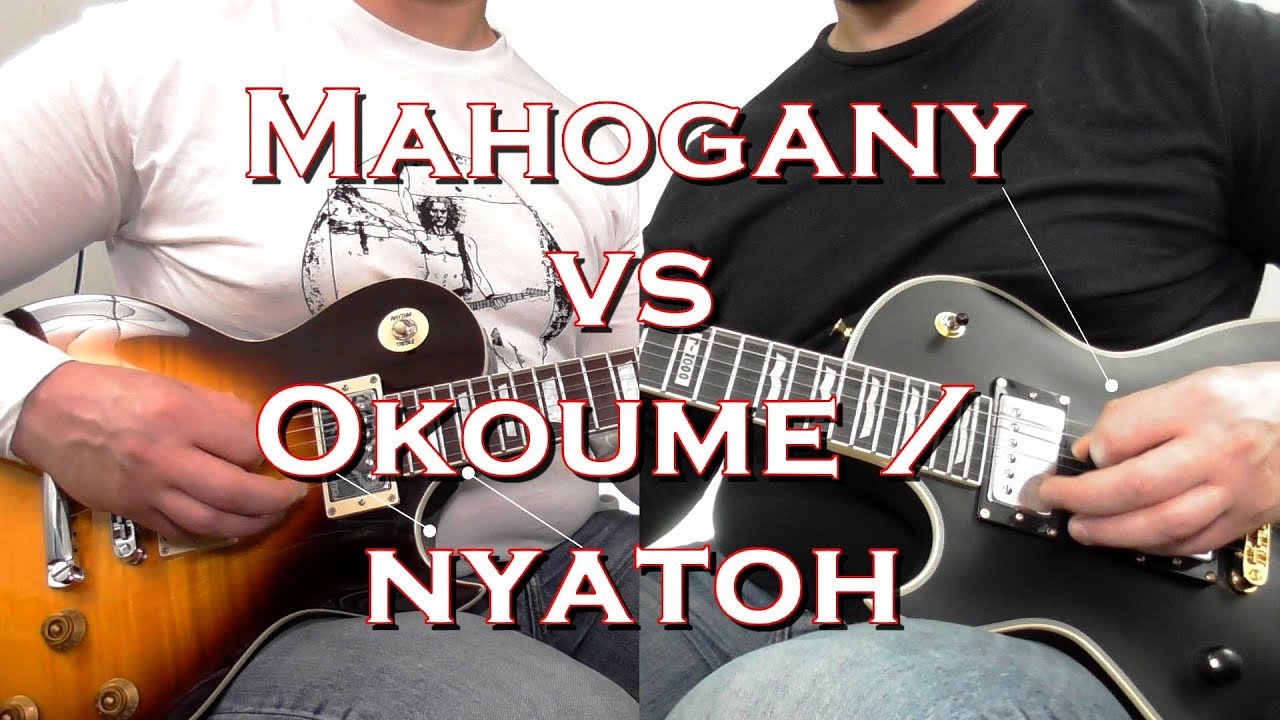
Okoume Wood: 8 Unique Properties That Make It Irresistible.

Did you know Okoume plywood is just 0.2mm to 0.3mm thick? This thin veneer makes it light yet strong and versatile. It comes from the tropical tree Aucoumea klaineana. This wood is loved for its beauty and performance in furniture and musical instruments, like guitars.
We’ll look at eight special qualities of okoume wood. These include its durability and eco-friendly harvesting. You’ll see why Aucoumea klaineana is so popular by learning about these.
Table of Contents
What is Okoume Wood?
Okoume wood comes from West Africa, mainly Gabon. Its lightweight makes it easy to handle and ship. The tree it comes from grows in tropical rainforests. Because it’s easy to work with, it’s popular for making plywood.
Looking into okoume wood shows it has key features:
- Natural Range: Okoume trees (Aucoumea klaineana) are found in Equatorial Guinea, southern Cameroon, and northwestern Congo. They grow up to 1,000 meters high.
- Climate: The area gets a lot of rain, between 1,500 mm and 3,000 mm. It has a dry season for about three months.
- Growth Conditions: The temperature is around 26°C, ranging from 6°C to 9°C.
This wood has some advantages but also some disadvantages. It is not very resistant to fungi or termites, but it can be treated to some extent. It’s best used indoors where it is dry.
| Characteristic | Value |
|---|---|
| Average Dried Weight | 28 LB/cubic foot |
| Janka Hardness Rating | 405 |
| Specific Gravity | 0.44 |
| Naming Clarifications | Often marketed as Equatorial Mahogany or Okoume Mahogany |
Okoume wood’s reputation has changed over time. It was once seen as less valuable than mahogany. But, since the mid-2000s, guitar makers like Fender and Takamine have started using it. They value its sound and looks.
The Unique Appearance of Okoume Lumber
It has a striking look that catches the eye. Its colors and grain patterns make it stand out. This makes it a top pick for many uses.
Color and Grain Patterns
The color of okoume wood ranges from reddish-brown to light pink. This range adds warmth to any space, similar to Mahogany but more affordable. The grain patterns are also unique, with straight or slightly wavy textures.
This texture makes the wood more attractive. Its smooth finish is perfect for detailed work in furniture and decorations.
Typography of Okoume Wood
Okoume wood is known for its ease of workability. It’s easy to shape, ideal for detailed designs. Unlike harder woods like Oak, Okoumé is softer, making it easier to work with.
With a Janka hardness rating of 400 lbf, it’s perfect for creating beautiful pieces without too much effort. Its softness and attractive grain make it a favorite among woodworkers and designers.
| Feature | Okoumé | Oak | Maple |
|---|---|---|---|
| Color | Reddish-brown to light pink | Light to dark brown | Light cream to reddish-brown |
| Grain Pattern | Straight to slightly wavy | Mostly straight | Straight with some curl |
| Softness | Relatively soft | Hard | Harder than Okoume |
| Workability | Easy to shape | Challenges due to hardness | Requires extra effort |
| Janka Hardness | 400 lbf | 1,300 lbf – 1,500 lbf | 1,450 lbf |

Lightweight Yet Strong: A Unique Property
Okoume is known for being both light and strong. It weighs about 33 pounds per cubic foot, making it lighter than many hardwoods. This lightness doesn’t mean it’s not durable; it’s actually very strong.
Its strength is key for products like boat hulls. This is because it can handle a lot of stress without breaking. It’s also resistant to warping and bending, which makes it last longer.
This wood is great for places that are humid or near water, as long as it’s sealed well. This makes it a top choice for the marine industry. It helps boats be lighter, which means they go faster and use less fuel.
High-end car brands use okoume wood for car interiors. It’s strong but light, making it perfect for dashboards and panels. Architects also like it for walls and cabinets because it looks good and is sustainable.
This tropical hardwood is lightweight. It is easy to handle and install. This can save money and time on construction projects. Special finishes that protect it from the weather can keep it looking good.
| Property | Details |
|---|---|
| Weight per Cubic Foot | Approximately 33 lbs |
| Strength Classification | Class I (Interior), Class III (Exterior) |
| Moisture Resistance | Good when properly sealed |
| Common Applications | Boats, Automotive Interiors, Wall Paneling |
| Density Range | 320-400 kg/m³ |
Durability and Resistance to Decay
Okoume wood is known for its durability and resistance to decay. It’s perfect for outdoor use. This wood fights off fungal attacks and other decay causes well, thanks to proper treatment. Its Janka hardness rating of 510 lbf shows it’s softer than some hardwoods. But, its decay resistance makes up for this.
Decaying Resistance in Outdoor Applications
Okoumé can handle outdoor harshness well. It’s great for outdoor furniture and marine uses because of this. With the right treatment, it warps or twists little, lasting longer outdoors. In yachts, its lightness is a plus, balancing durability and weight.
Use protective finishes to keep this Durable and moisture-resistant wood looking good outdoors. These finishes boost its environmental resistance and keep its beauty. Over time, the wood changes from pale pink to a rich golden brown with a reddish tint.
Okoume Wood in Musical Instruments
Okoume is becoming a favorite for making musical instruments. It’s known for its beauty and sound quality. The Okoume wood guitar offers a warm, resonant sound that musicians love.
It’s used in many musical instruments, but guitars are a big hit. This wood makes guitars sound amazing.
Is Okoume Wood Good For Guitars
Okoume wood is great for guitars because of its sound. It has a rich, full sound that balances well with different pickups. This makes it a top pick for guitar makers.
It also looks great. Its unique grain shows off many finishes, making it a hit among guitar builders, especially in the 1980s.
Going back to the late 1950s, This Lightweight tropical hardwood was a go-to for guitars. It’s strong, light, and sounds amazing. This makes it perfect for musicians of all levels.
Okoume Wood: An Eco-Friendly Choice
Okoume wood is a top choice for those who care about the environment. It’s harvested in ways that keep forests healthy. This makes it a great option for those who want to help the planet.
Harvesting Practices
Okoume wood is harvested with care for the future. This means forests stay healthy and wood is available for years to come. It’s a choice that’s good for both the planet and our homes.
Certification and Sustainability
Certification is key for Okoumé wood. The Forest Stewardship Council (FSC) checks if it’s really sustainable. This means we know the wood comes from places that care about the environment.
| Aspect | Details |
|---|---|
| Harvesting Practices | Responsible forestry management; reforestation efforts |
| Certification | FSC certified ensuring sustainable sourcing |
| Environmental Impact | Lower energy consumption; reduced emissions |
| Recyclability | High recycling rates; compostable materials |
Applications in Furniture Design
Okoume wood, also known as Gaboon, is a favorite in furniture design. It’s a lightweight tropical hardwood that’s both affordable and versatile. This makes it a hit with designers and buyers.
The wood’s light pinkish color gets deeper over time, adding beauty. It looks like more expensive woods when stained. This is great for those who want stylish furniture without spending a lot.
Okoume is not just for furniture. It’s also used in engineered flooring and veneer, which are becoming more popular. Its stability and light weight make it perfect for furniture and flooring.
To show why okoume wood is a good choice, here’s a comparison with other woods:
| Wood Type | Cost per Board Foot | Durability | Aesthetic Appeal | Maintenance Requirements |
|---|---|---|---|---|
| Okoume | $5 – $8 | Good | High (mimics pricier woods) | Low |
| Beech | $5 – $8 | Excellent | Moderate | Low |
| Ash | $6 – $10 | Superior | High | Moderate |
Okoume lumber is easy to work with, making it great for detailed designs. Keeping it clean with a damp cloth helps it last longer. Taking care of it can make your furniture last for years.
Challenges and Considerations
Okoume wood has many benefits, but it also comes with challenges. One big issue is its sensitivity to moisture. If not treated right, it can warp and lose its shape. Keeping humidity levels between 30% and 50% is key to avoid unwanted changes, like swelling or shrinking.
Using Okoume lumber also means watching out for other issues. It’s durable, but high humidity can cause it to swell and warp. This shows the importance of protecting it from the environment. Quality makers need to keep their workspaces controlled.
Regular care is crucial to overcome okoume wood’s limitations. A light oil helps keep it looking good and strong. Cleaning with mild soap and warm water is also important to keep its beauty and function. This makes maintenance a must in making okoume wood products.
There’s a growing need for eco-friendly finishes in woodworking. The future might see smart tech, like IoT devices, to monitor conditions. This could help make Okoumé wood products last longer and support better industry practices.
Conclusion
Okoume wood is highly valued for its unique qualities. It’s lightweight yet strong, making it perfect for furniture and musical instruments. Its beauty and durability are unmatched, attracting many users.
Okoume is also eco-friendly, which is a big plus. This makes it a great choice for those who care about the environment. It’s a win-win for both makers and consumers.
But, there are challenges to using okoume wood. The demand for sustainable practices is growing. Choosing okoume helps support responsible forestry.
Okoumé is a key resource, with Gabon’s forests holding a significant amount. It supports both conservation and economic growth. This makes it a vital part of sustainable innovation.
Okoume wood is a smart and stylish choice for the industry. Its wide range of uses and benefits make it a cornerstone for eco-friendly products. It’s a key player in creating beautiful, sustainable items.
FAQs
What is okoume wood and where does it come from?
Okoume comes from the tropical tree Aucoumea klaineana, mainly in West Africa, like Gabon. It’s known for being light, strong, and having a beautiful reddish-brown color.
What are the key properties of okoume wood?
Okoume is light but strong, resists decay well, and has nice grain patterns. It’s easy to work with and is good for the environment because it’s harvested sustainably.
Is okoume suitable for making guitars?
Yes, okoume wood is great for guitars. It sounds warm and resonant, and is light, making it easy to play.
How does the appearance of okoume wood contribute to its appeal?
Okoume wood has a striking reddish-brown color with pinkish hues. Its straight to slightly wavy grain patterns and smooth texture make it perfect for fine finishes, enhancing its beauty.
What are the benefits of using okoume wood for furniture design?
Okoume is light but strong, making it perfect for furniture. Its beauty and workability let designers create both functional and stunning pieces.
Are there any challenges associated with okoume wood?
Yes, okoume can warp if exposed to too much moisture. It also needs regular care to stay durable, which is important in harsh environments.
How sustainable is okoume wood?
Okoume is eco-friendly because it’s harvested responsibly. Suppliers follow sustainability standards, reducing environmental impact and supporting reforestation.
Can okoume be used in outdoor applications?
Yes, okoume wood is durable and resistant to decay. It’s good for outdoor use if it’s properly treated and protected from the weather.
Why is okoume popular among woodworkers?
Woodworkers love this wood for its workability. It allows for detailed designs and finishes, making it great for many woodworking projects.







